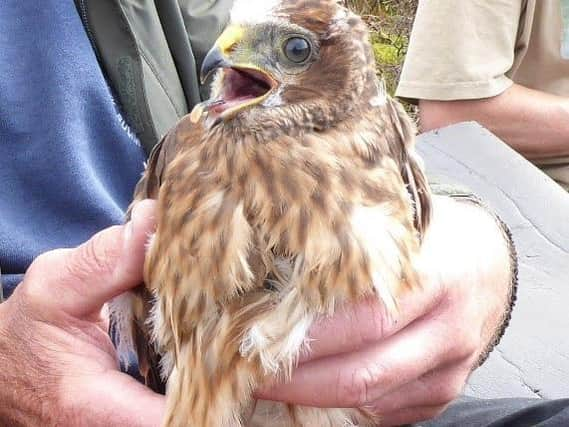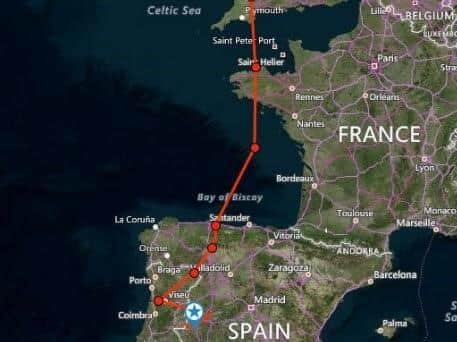Endangered Bowland bird of prey makes 1,000 mile winter flight to Portugal


A hen harrier born in Lancashire in 2019 has made an astounding journey south to Portugal – data from his satellite tag revealed he has flown over 1,000 miles to spend the winter abroad.
Named Apollo, the male hen harrier was one of 22 chicks who successfully fledged from five nests being monitored by the RSPB’s Hen Harrier LIFE project team and partners on the United Utilities Bowland estate in the summer of 2019.
Advertisement
Hide AdAdvertisement
Hide AdHen harriers are one of the most persecuted birds of prey in the UK, and the RSPB’s Hen Harrier LIFE project team have been fitting satellite tags to young birds to learn more about where the birds travel.


James Bray, the RSPB’s Bowland Project Officer, said: “Each day was nerve wracking but after two long months we were really pleased to see the chicks start to fledge.
We were not prepared for what we would see next though – it’s truly amazing that these young birds can make such long journeys and shows the value of satellite tag technology.”
“We were astounded by Apollo’s movements as he travelled south. Crossing the English Channel in October, Apollo journeyed into Brittany before passing over the Bay of Biscay into Northern Spain - a journey over 400 miles long which remarkably only took him less than a day to complete.
Advertisement
Hide AdAdvertisement
Hide Ad“We are continuing to monitor Apollo and we’re excited to see whether this remarkable bird will return to his native Bowland for the summer and if we might see him sky-dancing above our hills again… “
Dr. Cathleen Thomas, Senior Project Manager for Hen Harrier LIFE said: “This is a spectacular piece of flying for a bird that was only a few months old on his first major outing. The joy of working on a project like this is that we’re learning all the time about the capabilities of these amazing birds.
"It also helps us to implement better measures to protect them and shows that we need cross-border collaboration across the UK and beyond to protect this species and preserve its habitat across its entire range before we lose it for good.
"Independent scientific studies have shown that the main cause of the hen harrier population decline is illegal killing associated with management of moorlands for driven grouse shooting. It vital that we work together to protect these birds, by licencing of grouse moors across the UK. A licencing framework would set a new direction for the legal and sustainable management of large areas of our upland landscapes, as well as providing a meaningful deterrent to wildlife crime. We welcome the Scottish Government’s review of grouse moor management and their recommendation of licencing of driven grouse shooting and would like to see this rolled out across the whole of the UK.”
Advertisement
Hide AdAdvertisement
Hide AdThe tags have revealed the birds travel widely across the UK and beyond into Europe.
The project team will use the data from the journeys of Apollo and other tagged hen harriers to assist with the future planning of suitable conservation management for hen harriers.
The use of satellite tagging technology to track the individuals also provides powerful information to better understand species and their ecology, including the reasons for the UK population decline.
Comment Guidelines
National World encourages reader discussion on our stories. User feedback, insights and back-and-forth exchanges add a rich layer of context to reporting. Please review our Community Guidelines before commenting.